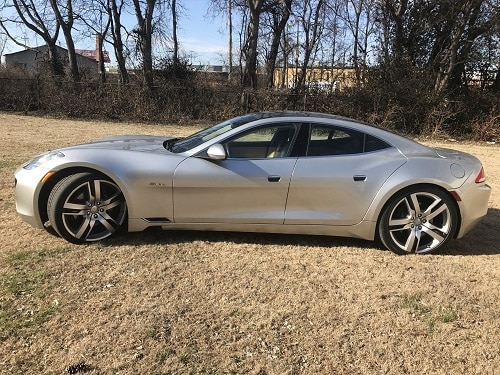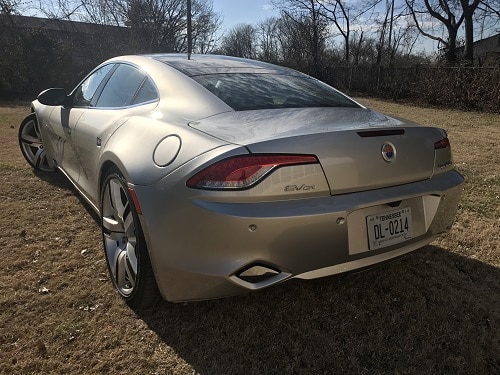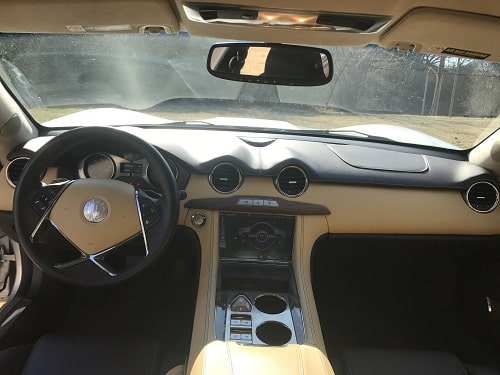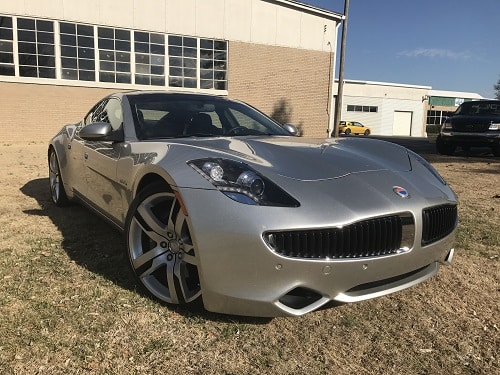
Fisker Karma- 2012
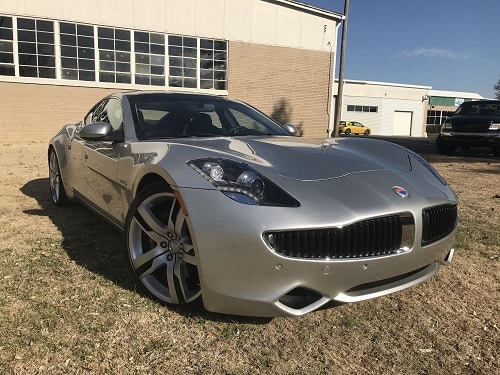
Danish-born American automotive designer Henrik Fisker is best known for designing luxury cars such the BMW Z8, the Aston Martin DB9, and the Aston Martin V8 Vantage. In 2005, Fisker teamed up with colleague Bernhard Koehler, to start a new luxury car design firm, Fisker Coachbuild. Two years later, Fisker Automotive was established to produce modern-day coach-built automobiles with a 21st century twist. The Fisker Karma began production in July 2011 as the world’s first luxury Plug-in Hybrid-Electric Vehicle. A PHEV is essentially a fully electric car with a range-extending fossil-fuel-powered generator that sends electricity directly to the drive motors and also helps recharge the batteries. The Karma’s two electric motors produce a quoted horsepower of 403 hp with a claimed 125 mph top speed. The electric motors are situated ahead of and behind the rear axle. The Karma’s onboard generator is a 260-hp, 2.0-liter GM-sourced Ecotec four-cylinder turbocharged gas engine, which helps the 5,300 lb. vehicle achieve a total range of 230 miles.
The batteries are housed in the large center console, which runs the length of the car, making it a true four-seater. Although a large car, the EPA classifies it as a subcompact due to its interior dimensions! Car and Driver’s review in 2012 claimed that even though the Karma had a 9.4” longer wheelbase than a Porsche Panamera, its back seats are smaller than a Honda Fit, and it has only half the trunk space of a Kia Rio! The Karma features a roof-mounted solar panel which helps power the climate control. Other eco-friendly features include the use of recycled glass flakes in the Diamond Dust™ paint, recycled plastics in the carpeting, wood reclaimed from California forest fires or recovered from Lake Michigan in the dash, and leather from Bridge of Weir, a Scottish company committed to sustainability.
After delivering 2,000 Karmas to their owners in North America and Europe, production was halted in November 2013 after the sole battery supplier filed for bankruptcy. In addition, Consumer Reports was unable to complete a review of the Karma; while conducting their test the car simply stopped working and was unable to restart before they were able to finish. Although it was voted one of Time magazine’s “50 Best Inventions of 2011”, and named Top Gear Magazine’s “Luxury Car of the Year for 2011”, a series of fires lead to costly recalls for the company, as well as unfavorable media attention.
In 2010, the US Department of Energy had awarded Fisker a $529 million green-energy loan, of which the company had only paid back $200 million by February of 2012. Because the company was unable to meet DOE milestones, the government froze the loan. Fisker resigned as chairman of Fisker Automotive in March 2013, mainly due to disagreements with management over business strategy. Later that year, the company declared bankruptcy. Its assets were sold at auction in 2014 to Chinese automotive parts firm Wanxiang for $149.2 million. In September 2015, Fisker Automotive was renamed Karma Automotive, which revived and renamed the Karma as the Revero in 2016. The Karma Revero is currently produced in California and is on sale in the US and Canada.
Specifications:
Manufacturer: Fisker Automotive
Country of Origin: United States (headquarters); Finland (production)
Drivetrain Configuration: Front gasoline engine (generator only), rear electric motors, rear-wheel drive
Engine: (gas) 2.0 turbocharged four-cylinder, water-cooled; (electric) two 120 kW motors
Transmission: 1-speed
Top Speed: 125 mph
Years of Production: 2011-2012
Number Produced: 2,349
Original Cost: $103,000

